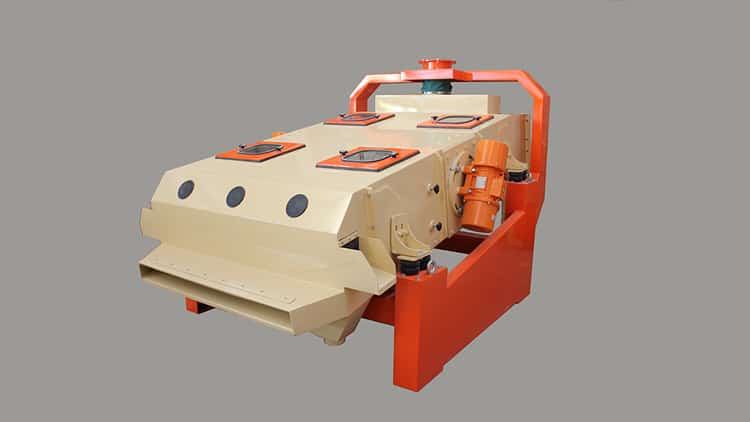The RSVM Shale Shaker, is designed for the cleaning or classification of cereals or other products, allowing the separation of impurities and foreign objects of different sizes or weights.

To the sieve itself, an air channel or tarara and a decanting chamber can be added as optional.
Principle of operation:
Product flow:
A- Inlet of product to be classified
B- Coarse product outlet
C- Outlet of intermediate size product
D- Outlet of fine product
E- Outlet of light but coarse product
F- Outlet of dust and very light particles
G- Outlet of intermediate size product, totally clean.
Parts:
- Sieve shaker
- Air channel or tarara
- Decanning chamber
- Settling chamber
- Decanting chamber
Sifter:
The machine is equipped with two superimposed sieves, of which the upper one is used to separate coarse bodies and the lower one to remove fine particles. The vibration imparted by 2 vibrating motors with adjustable effect, produces a stratification that increases the accuracy of the classification.
Under each screen, which is usually made of perforated plate, there are rubber spheres that, by the effect of their movement, hit the perforated surface to clean it of possible particles that may obstruct the passage through it.
Air channel or Tarara:
At the outlet of the intermediate product, it is possible to intercalate this element, which will separate light products that may be found in it (shells, fragments, dust, etc). This operation is achieved by passing the grain through an air channel in an ascending way. Due to the difference in apparent specific weight or geometric characteristics, the light products are carried upward by the air to the suction and separation system that is required and is not represented in the figure. A valve at the top of the channel allows to regulate the air velocity to achieve the optimum separation.
Settling chamber:
It is a body that by centrifugation effect and by lowering the flotation speed of the product, makes the heavier product fall or decant. In this way, the product is taken to a system of tilting valves that extract it to one of the sides. By adding this optional element, we add two advantages to the system.
On the one hand, we make a new separation in 2 fractions. Very useful, for example, to separate grain husks from grain dust.
And on the other hand, by being able to take the decanted product and observe it, it makes it much easier for us to regulate the air flow to avoid carrying good product with it.
This air channel or tarara, makes the air circulate through a thin film of grain, carrying with it the light particles (except dust), which all fall into a channel of the decantation chamber and exits to one side of the machine through a system of oscillating valves.
In short, if all 3 elements are placed, the incoming product can be sorted into 5 parts.


